Five previously unseen Alexander Girard prints get a new lease of life

As far as American design icons go, Alexander Girard is undoubtedly one of the greatest. Trained as an architect, but highly skilled in many other design disciplines, Girard was the founding director of Herman Miller’s textile division from 1952-1973, where he produced over 300 patterns from his base in Santa Fe, New Mexico that ultimately left a profound impact on 20th century visual culture.
Five of Girard’s unseen designs have been reissued this month by the textile maker Maharam, which has long been a champion of the designer with 27 reissued Girard patterns to date. The latest additions were unearthed from the archives of the Cooper Hewitt Museum during a visit that both Maharam and Girard Studio (run by Girard’s grandchildren Kori Girard and Aleishall Girard Maxon) took together in July 2016 – two of which were never realised during Girard’s lifetime.
The new designs are loving homages to his design signature. Two patterns, Plus (1960) and Steps (1960), were originally created as printed napkins for the restaurant La Fonda del Sol, that occupied the ground floor of the Time-Life Building in New York City. Girard conceived the entire environment of the restaurant, designing every detail from matchstick holders, ceramic tiles and uniforms to signage, sugar packets and menus.
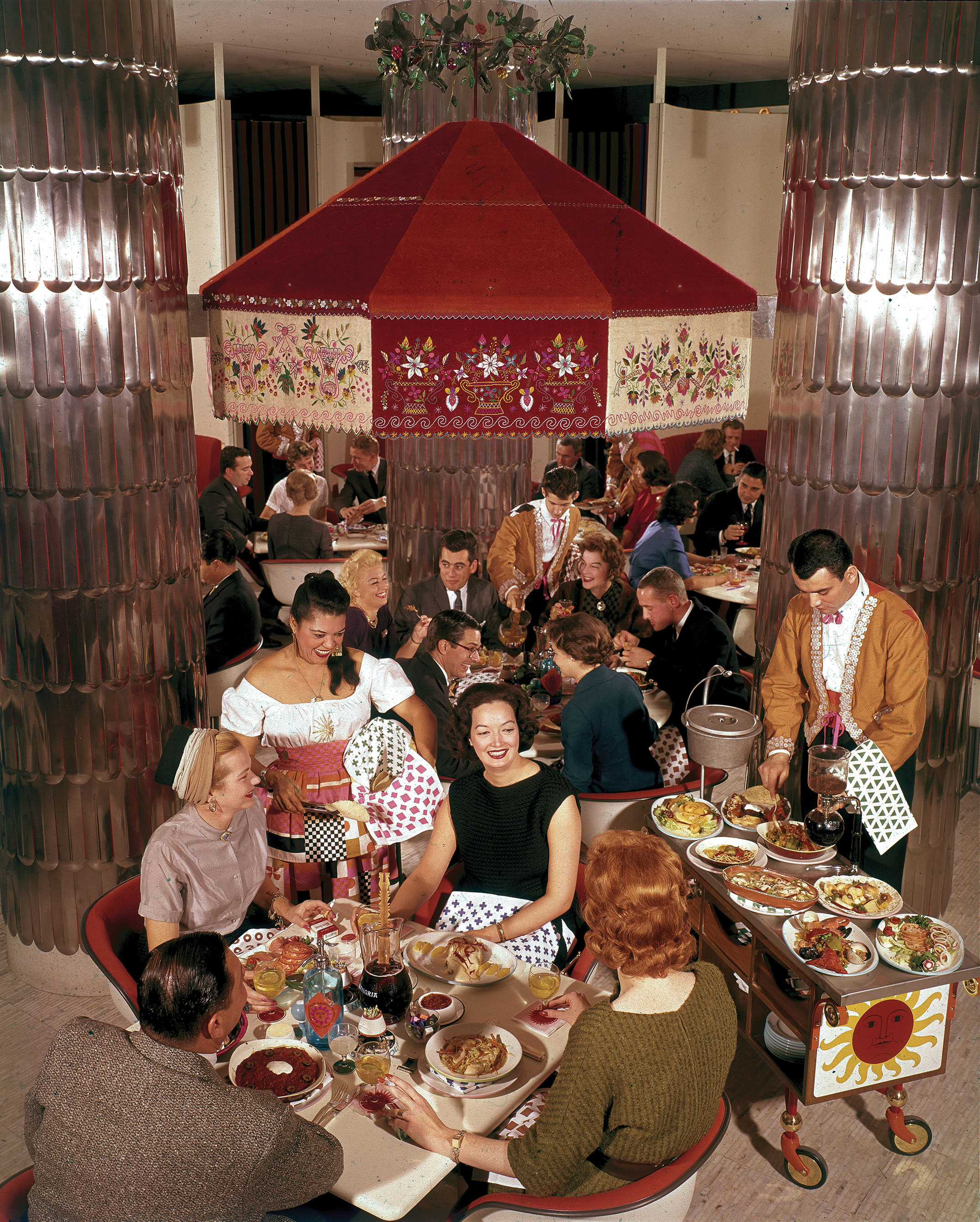
La Fonda del Sol restaurant, featuring Girard’s napkin designs, 1960.
Amongst all of this was a simple cross and step geometric motif that features in Plus and Steps. Transformed as cotton dhurrie rugs – a first in Maharam’s ongoing collaboration with Girard Studio – the universal shapes are realised in classic duotone pairings from Girard’s chromatic signature. A third rug in a straightforward check pattern, which he originally designed for Georg Jensen in 1956 as a table setting, engagingly meanders between having a graphic and playful spirit.
On the textile front, Maharam and Girard Studio looked to a drawing of Circles (1952) and an untitled collage from 1962, which is now known as Edges, that were both uncovered in the museum archive. Less recognisably Girard, but embodying the same bold spirit and graphic sense all the same, these textiles showcase how basic geometric forms possess a powerful, enduring quality.
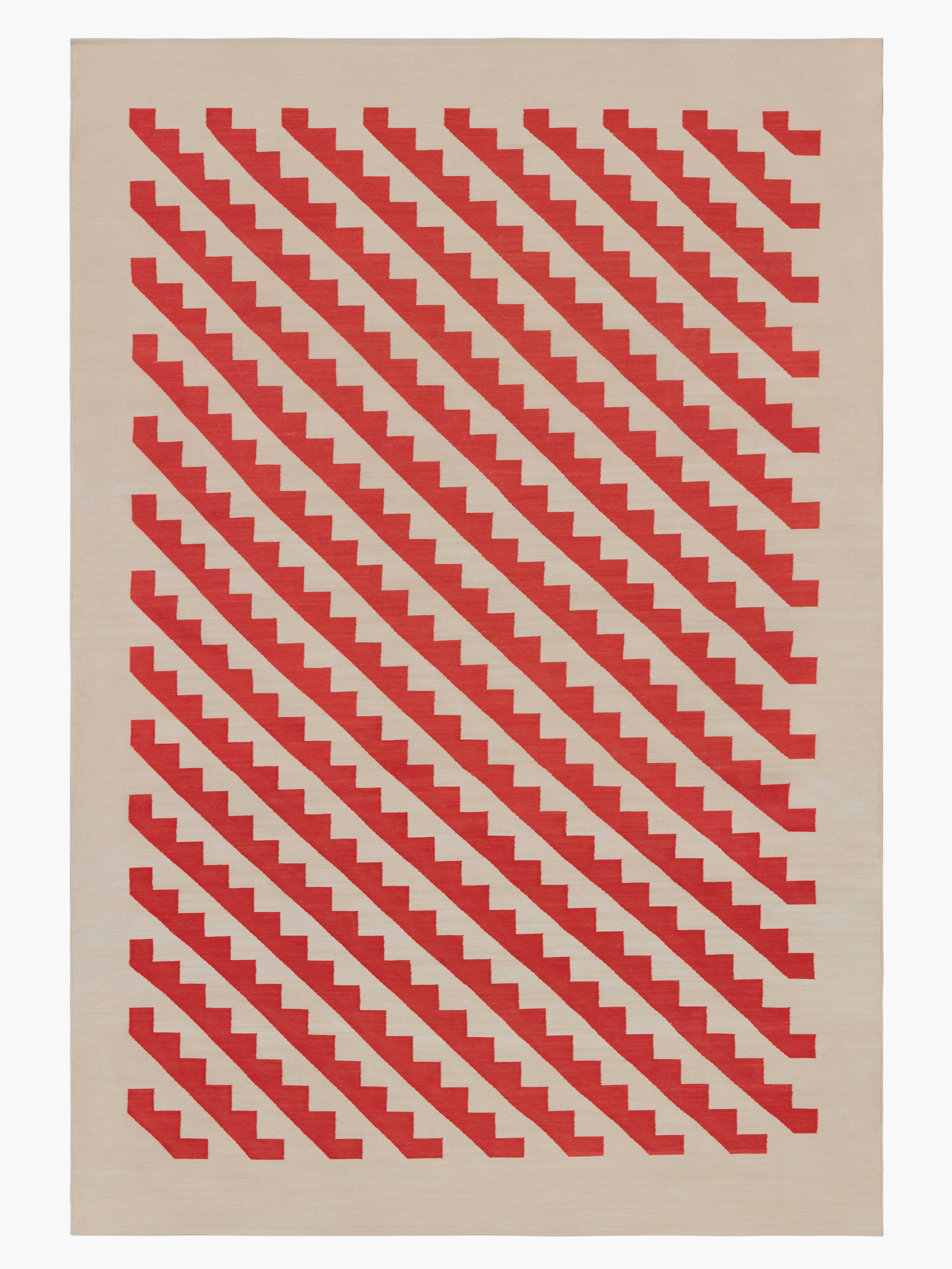
Steps, 1960, by Alexander Girard
With its miniature square and rectangular strips of matt and metallic paper, the unrealised sketch for Edges transforms a scattering of shapes into a captivating design with clever combinations of colour and metallic yarn. On the other hand, the optic quality of Circles speaks simply for itself in ultramarine on ivory and pink, yellow and tan on ecru. These contrasts of colours reflect Girard’s preference for contrast and saturation, rather than uniformity, which is even more relevant today.
The collaboration doesn’t end there: Maharam will sponsor the landmark retrospective, ‘Alexander Girard: A Designer’s Universe’, opening in May 2019. Organised by the Vitra Design Museum, the exhibition will be staged at the Museum of International Folk Art in Santa Fe, where it will be presented through October 2019, alongside the permanent Girard exhibition, ‘Multiple Visions: A Common Bond’.
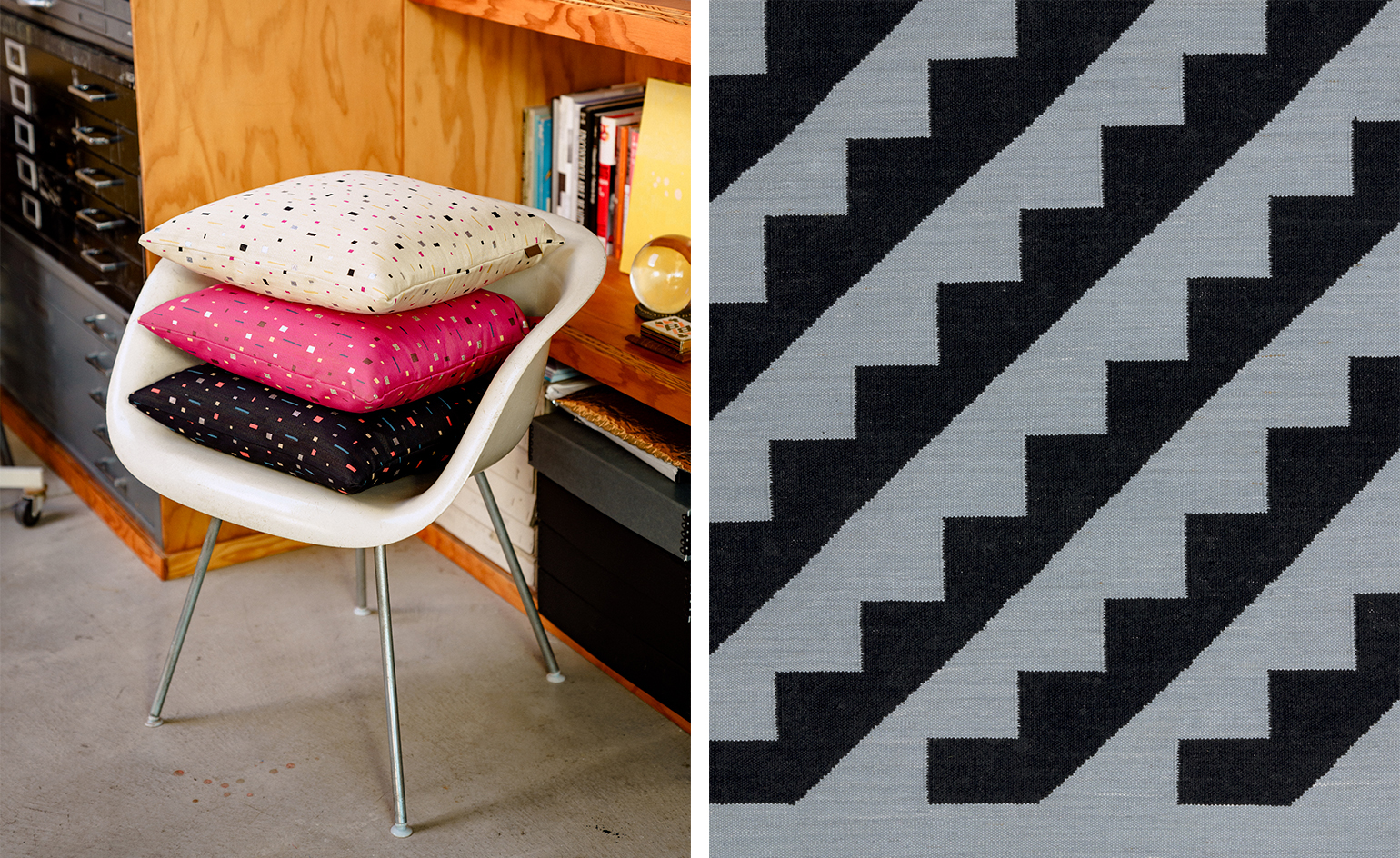
Left, Maharam textiles with the Edges print. Right, Steps print, 1960
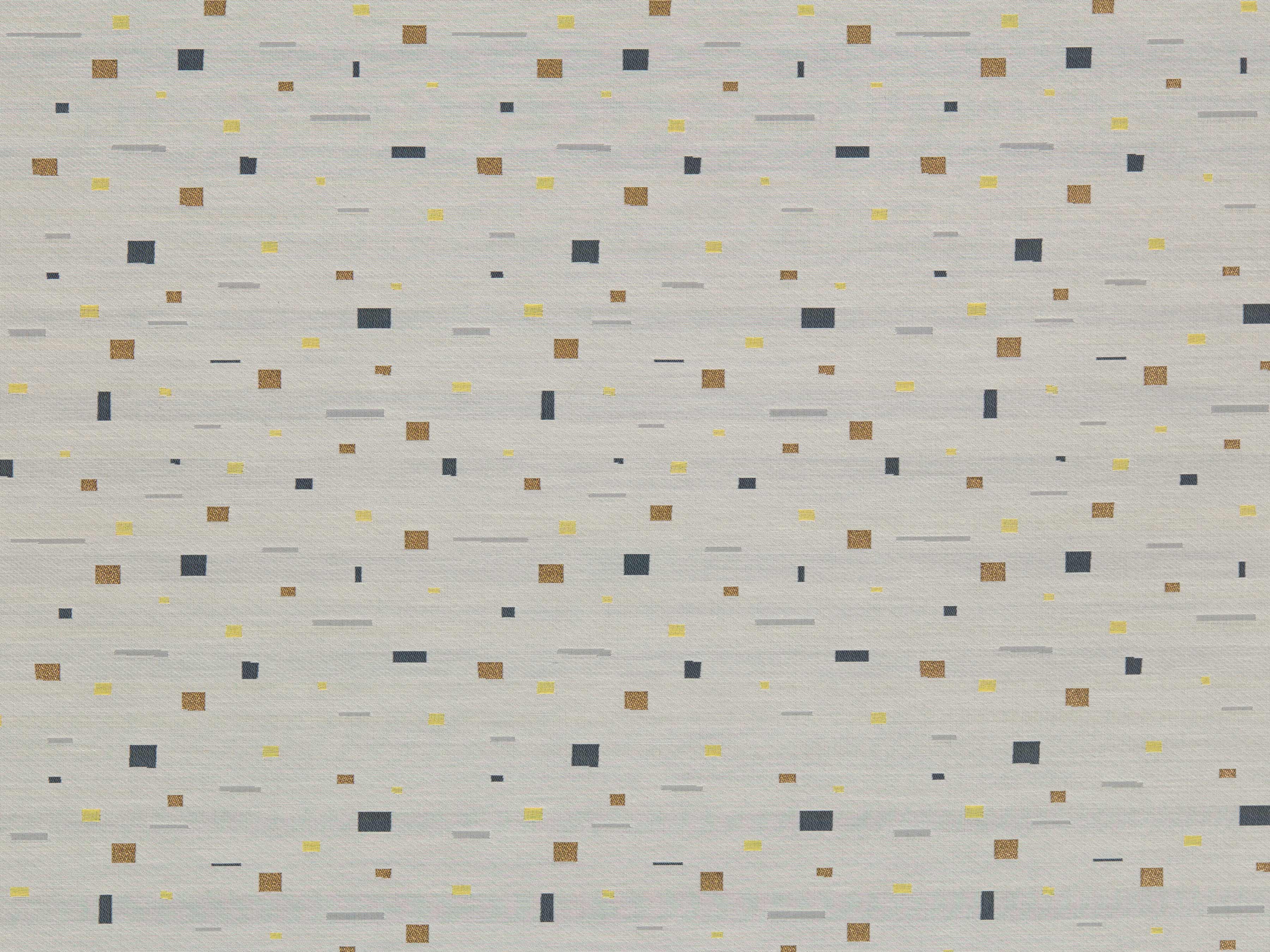
Edges print, 1962

Check print 1956, by Alexander Girard, for Georg Jensen
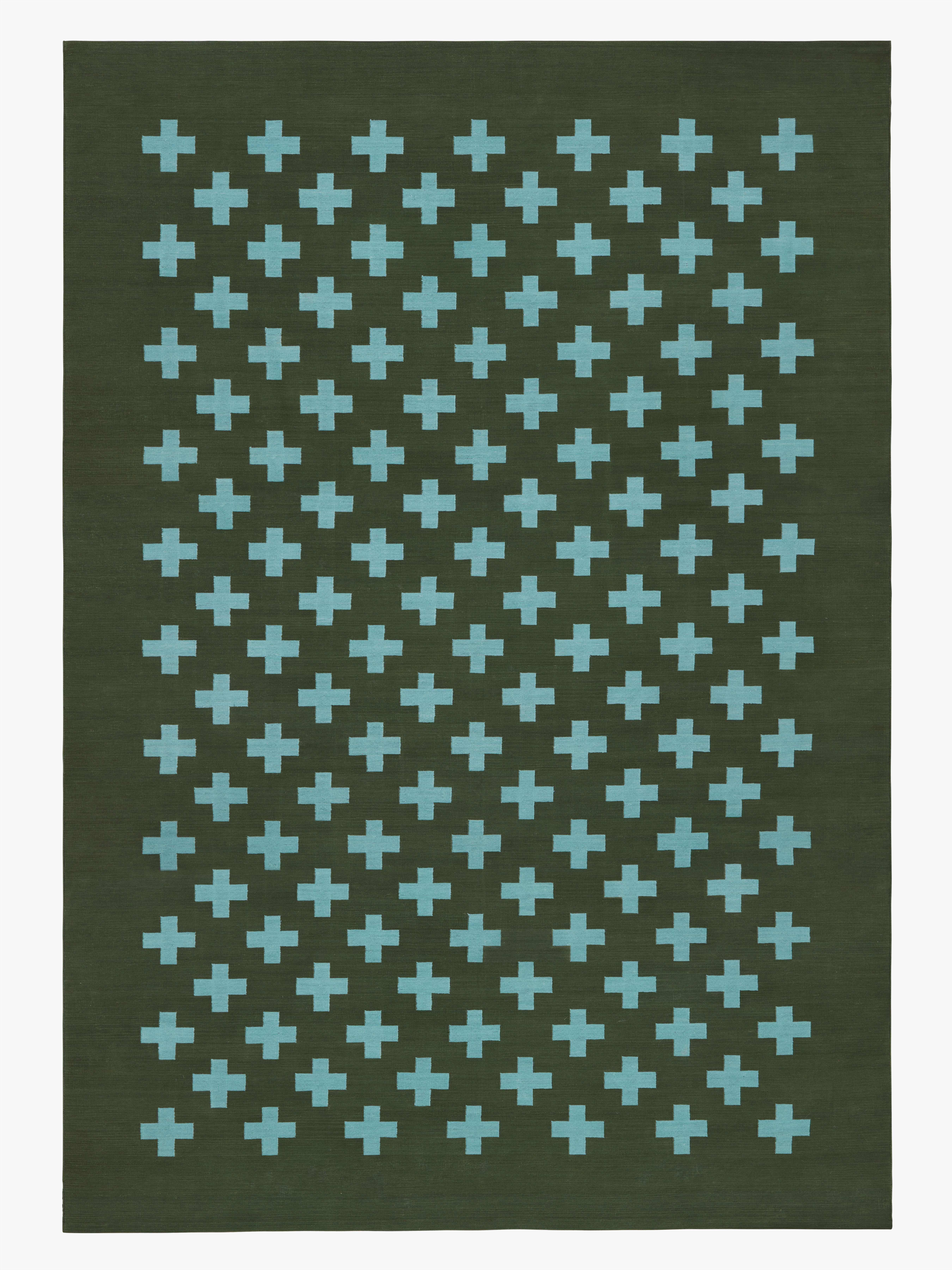
Plus print, 1960
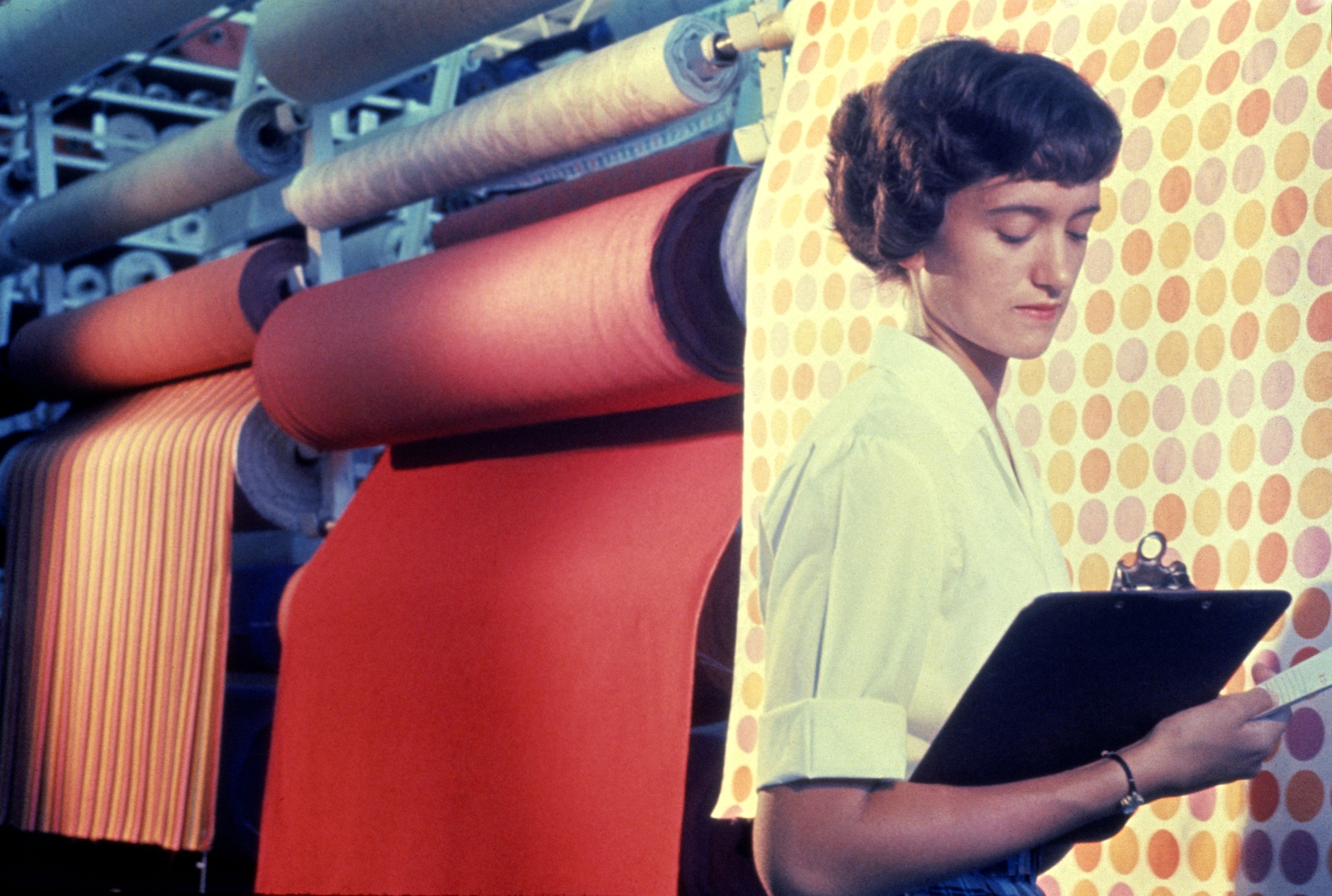
The Circles textile in production, 1960. Courtesy Herman Miller
INFORMATION
For more information, visit the Maharam website
Receive our daily digest of inspiration, escapism and design stories from around the world direct to your inbox.
Pei-Ru Keh is a former US Editor at Wallpaper*. Born and raised in Singapore, she has been a New Yorker since 2013. Pei-Ru held various titles at Wallpaper* between 2007 and 2023. She reports on design, tech, art, architecture, fashion, beauty and lifestyle happenings in the United States, both in print and digitally. Pei-Ru took a key role in championing diversity and representation within Wallpaper's content pillars, actively seeking out stories that reflect a wide range of perspectives. She lives in Brooklyn with her husband and two children, and is currently learning how to drive.
-
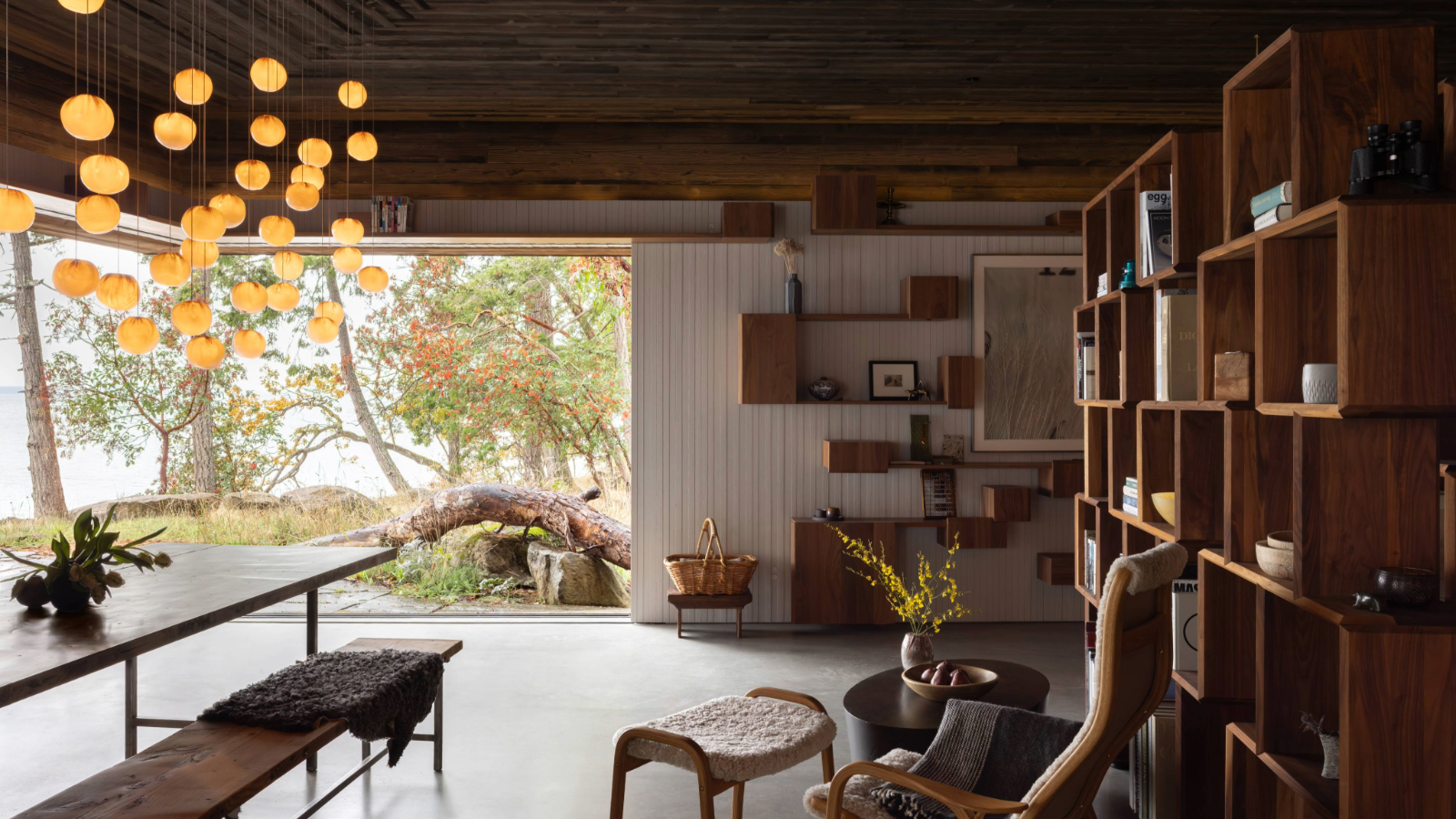 This retreat deep in the woods of Canada takes visitors on a playful journey
This retreat deep in the woods of Canada takes visitors on a playful journey91.0 Bridge House, a new retreat by Omer Arbel, is designed like a path through the forest, suspended between ferns and tree canopy in the Gulf Island archipelago
-
 Terrified to get inked? This inviting Brooklyn tattoo parlour is for people who are 'a little bit nervous'
Terrified to get inked? This inviting Brooklyn tattoo parlour is for people who are 'a little bit nervous'With minty-green walls and an option to 'call mom', Tiny Zaps' Williamsburg location was designed to tame jitters
-
 Let’s hear it for the Chopard L.U.C Grand Strike chiming watch
Let’s hear it for the Chopard L.U.C Grand Strike chiming watchThe Swiss watchmaker’s most complicated timepiece to date features an innovative approach to producing a crystal-clear sound
-
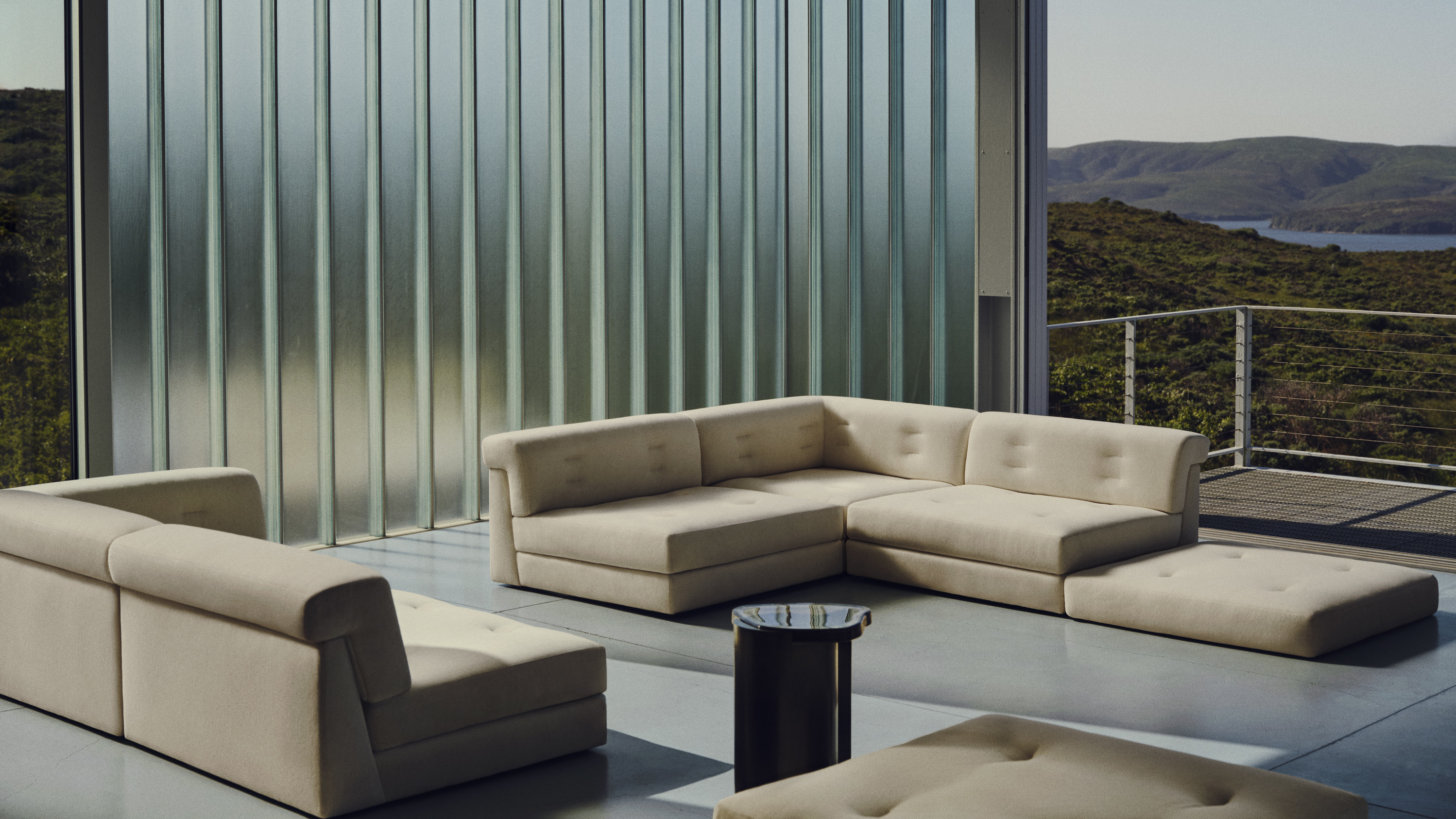 New furniture from Maiden Home elevates elemental materials through unique design
New furniture from Maiden Home elevates elemental materials through unique designFinely crafted and exquisitely formed, the New York furniture brand’s latest designs find their perfect showcase at a modernist Californian home
-
 Wallpaper* USA 400: The people shaping Creative America in 2025
Wallpaper* USA 400: The people shaping Creative America in 2025Our annual look at the talents defining the country’s creative landscape right now
-
 Workstead's lanterns combine the richness of silk with a warm glow
Workstead's lanterns combine the richness of silk with a warm glowAn otherworldly lamp collection, the Lantern series by Workstead features raw silk shades and nostalgic silhouettes in three designs
-
 Can creativity survive in the United States?
Can creativity survive in the United States?We asked three design powerhouses to weigh in on this political moment
-
 Murray Moss: 'We must stop the erosion of our 250-year-old American culture'
Murray Moss: 'We must stop the erosion of our 250-year-old American culture'Murray Moss, the founder of design gallery Moss and consultancy Moss Bureau, warns of cultural trauma in an authoritarian state
-
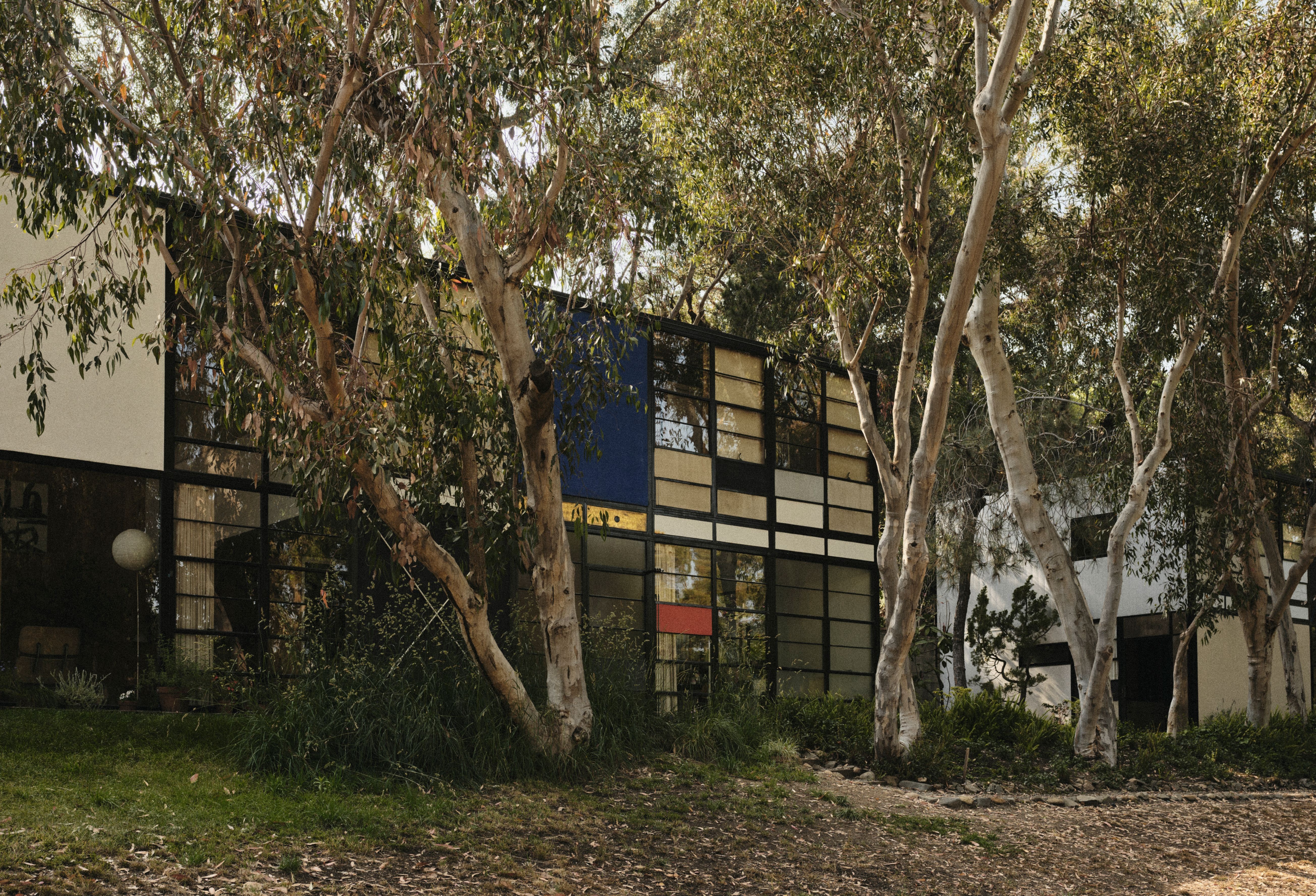 ‘You can feel their presence’: step inside the Eameses’ Pacific Palisades residence
‘You can feel their presence’: step inside the Eameses’ Pacific Palisades residenceCharles and Ray Eames’ descendants are exploring new ways to preserve the designers’ legacy, as the couple’s masterpiece Pacific Palisades residence reopens following the recent LA fires
-
 2025’s Wallpaper* US issue is on sale now, celebrating creative spirit in turbulent times
2025’s Wallpaper* US issue is on sale now, celebrating creative spirit in turbulent timesFrom a glitterball stilt suit to the Eames House, contemporary design to a century-old cocktail glass – the August 2025 US issue of Wallpaper* honours creativity that shines and endures. On newsstands now
-
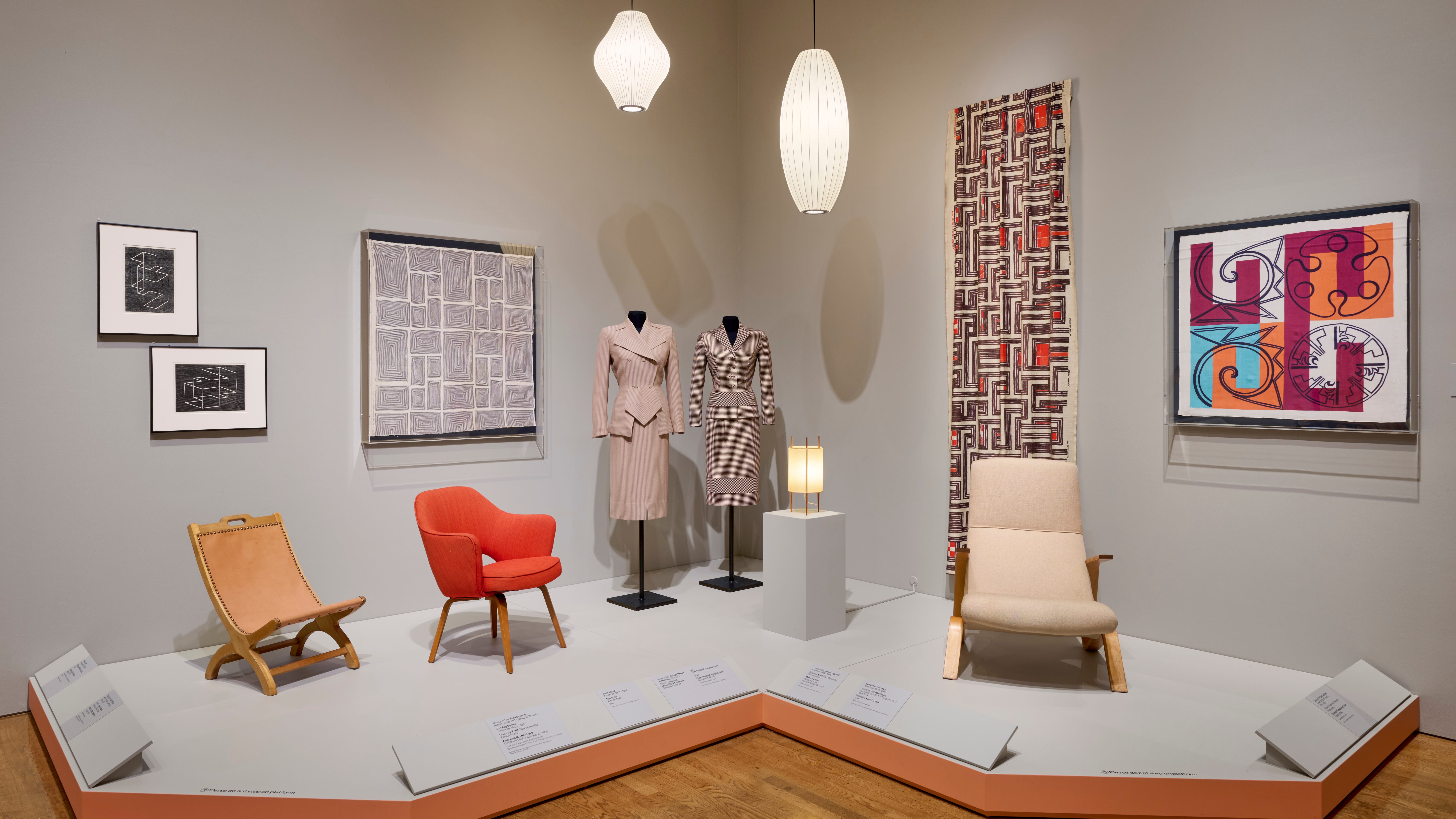 ‘Boom: Art and Design in the 1940s’ explores the creative resilience of the decade
‘Boom: Art and Design in the 1940s’ explores the creative resilience of the decadeNoguchi and Nakashima are among those who found expression and innovation in the adversity of the 1940s; take a walk through the Philadelphia Museum of Art exhibition